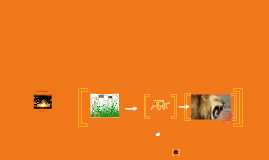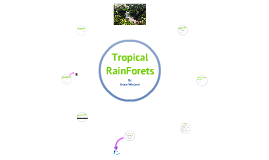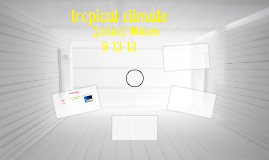Tropical
Transcript: Tropical Savanna Predators such as coyotes and badgers. Some herbivores include deer, antelope, rabbits,and cattle. Also owls, hawks, snakes, and insects. Desert Long, cold winters. Short mild summers. Moderate precipitation. High humidity. Acidic, nutrient-poor soils. Located in northern North America, Asia, and Europe. Hot, dry summers. Cool, moist winters. Nutrient-poor soils. Broadleaf deciduous trees, herbs. Biomes Temperate Grassland Boreal Forest Broad leaved evergreen trees. Ferns. Vines. Orchids and bromeliads Located in South and Central America, Souteast Asia, Africa, and Northeastern Australia Birds and mammals that can withstand harsh conditions. Migratory waterfowl, shore birds, Arctic foxes, and caribou. Also some small rodents. Tropical Dry Forest Strong winds, low precipitation. Short and soggy summers. Long, cold, and dark winters. Poor soil. Tall, perennial grasses; drought-tolerant and fire-resistant trees. Predators include lynx, timberwolves, and members of the weasel family. Moose and other large herbivores. Also beavers and migratory birds. Cold to moderate winters. Warm summers. Year round precipitation. Fertile soil. Warm to hot summers, cold winters, seasonal precipitation, fertile soil. Temperate Woodland & Shrubland Sloths, capybaras, anacondas, freshwater fish & piranhas, gorillas, and many insects / bugs Temperate Forest Warm temperature, seasonal rainfall, compact soil. Many fires set by lightning. Tropical Rain Forest Woody evergreen shrubs with small, leathery leaves. Fragrant, oily herbs grow during the winter and die in the summer. Dominant plants include Sitka spruce, western hemlock, and redwood. Hot and wet year round. Nutrient poor soils. Predators such as lions, foxes, and bobcats. Herbivores such as deet, antelope, sheep, and kangaroo. Also owls, hawks, ants, beetles, and other insects. Tall trees will form a dense canopy in wet season. Orchids and bromeliads. Aloes and other succulents. Grasses and herbs; most resistant to drought, fire, and cold. Low precipitation, soils rich in minerals but poor in organic material. Lions, leopards, cheetahs, elephants, giraffes, zebras, baboons, eagles, ostriches, insects. Predators are dominant. Bears, elk and deer, owls, and bobcats because bobcats are apparently everywhere. Deer, black bears, squirrels, raccoons and skunks, turkeys Located in Africa, South and Central America, Mexico, India, Australia, and tropical islands. Needleleaf coniferous trees. Small, berry bearing shrubs. Located in eastern United States, southeastern Canada, Europe, parts of Japan, China, and Australia. Located in North America, Asia, and northern Europe. Located in western coasts of North and South America, areas close to the Mediterranean Sea, South Africa, and Australia. Ground hugging plants such as mosses, lichens and short grasses. Mild temperatures, abundant precipitation during fall, winter, and spring. Cool, dry summer, rocky acidic soils. Predators such as coyotes, foxes, bobcats, and mountain lions. Herbivores such as deer, rabbits, and squirrels. Northwestern Coniferous Forest Tigers, elephants, monkeys, deer, pelicans, insects, reptiles (snakes and lizards) Located in Pacific coast of northwestern US and Canada (from northern California to Alaska). Succulents and plants with short growth cycles Located in central Asia, North America, Australia, central Europe, and South America. Warm year round. Wet and dry seasons. Rich soils subject to erosion Located in Africa, Asia, the Middle East, United States, Mexico, South America, and Australia. Located in eastern Africa, southern Brazil, and northern Australia. Tundra

















